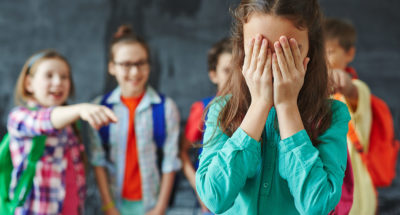
Developing a Growth Mindset About Bullies and Victims
Students apply a “growth mindset” lens to the personalities of bullies and their victims, recognizing that people can change.

Students apply a “growth mindset” lens to the personalities of bullies and their victims, recognizing that people can change.
Students will:
Before students arrive, write the following statements on the whiteboard:
Fixed Mindset Beliefs
No one likes me.
Growth Mindset Beliefs
I can make new friends.
Fixed Mindset Beliefs
I don’t belong.
Growth Mindset Beliefs
I can do things to help myself feel more like I belong here.
Fixed Mindset Beliefs
He is a bad person.
Growth Mindset Beliefs
He did something that I don’t like, but it doesn’t mean he can’t change.
Do students use more “growth mindset” language when talking about others or themselves in social situations?
A study with a diverse group of teens discovered that adolescents who were taught the belief that people have the ability to change lessened their social stress, helping them to cope better, to keep their bodies calmer, and to do better in school—as much as seven months later.
The way students view social challenges at school can dramatically affect the levels of stress they experience in their body, their thoughts, feelings, behaviors—and even their grades. If they believe that they (and their peers) have the capacity to change, then it’s more likely that they will see social struggles (like being bullied or excluded) as changeable and surmountable too.
It’s crucial for young adolescents to realize that they are not helpless; they can grow and adapt, and the peer who is challenging them can change, too. Things can get better. This perspective releases some of the pressure they might feel, and then they can think more clearly about a social problem as a challenge to solve rather than a threat to fear.

Are you ready to build a kinder, happier school where everyone belongs? Join Greater Good Educators! Explore the science of well-being in a supportive community of educators from around the world. Registration is now open for the 2025-2026 school year!
Comments